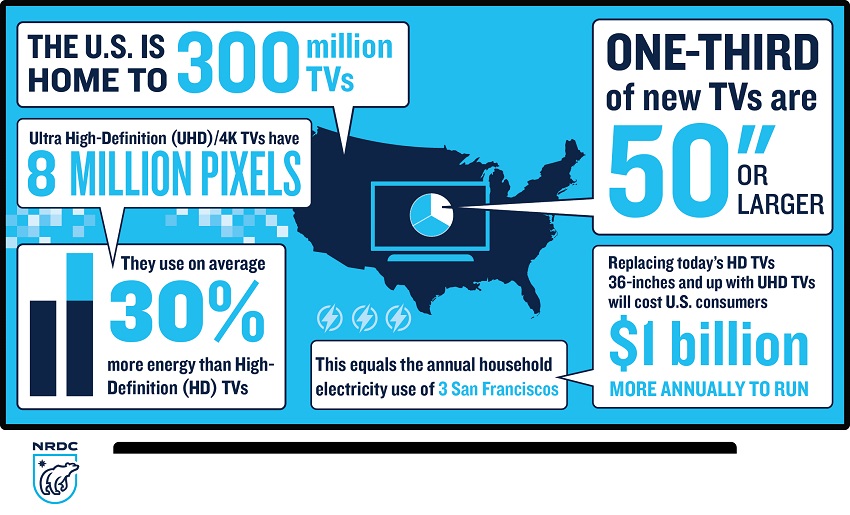UHD TVs Could Add $1B to Energy Bills
Click on the Image to Enlarge
SAN FRANCISCO—There may be a price to improving the picture quality of TVs, as the Natural Resource Defense Council has revealed that Ultra Hi-Def TVs use an average of 30 percent more energy than HD TVs, which could add as much as $1 billion to U.S. viewers annual utility bills. The report, “The Big Picture: Ultra High-Definition Televisions Could Add $1 Billion to Viewers’ Annual Electric Bills,” analyzes the energy use of UHD TVs due to their superior picture quality.

According to the report, a national switch from HD TVs with 36-inch or larger screens to UHD TVs would result in a jump of annual electricity use to 8 billion kilowatt hours, or as much electricity generated by 2.5 large power plants. The switch would also create 5 million metric tons of carbon pollution because of the required extra electricity.
With TVs growing in size—one-third of all new TVs are 50 inches or more—TV power use increases with it. New developments like high dynamic range could also add to the input; an HDR version of a movie uses 47 percent more power than a 4K version of the same movie, according to the report.
The report does detail steps that can be taken to reduce energy use of UHD TVs. One step is to enable automatic brightness control, which on average causes 50 percent less power, though it varies by model. Consumers can also save money off lifetime energy costs by buying models with the ENERGY STAR label, using automatic brightness control, and avoiding the quick start feature on Internet-connected TVs.
“The national energy and environmental consequences of the transition to UHD TV will be profound unless the TV manufacturing industry devotes sufficient time and resources to improve the efficiency of the TVs brought to market,” said Noah Horowitz, director of NRDC’s Center for Energy Efficiency. “The good news is that there are steps consumers, manufacturers and policymakers can take to make sure our newest-generation televisions are not needlessly wasting energy.”
To read the full report, click here.
Get the TV Tech Newsletter
The professional video industry's #1 source for news, trends and product and tech information. Sign up below.
